Waterfront Properties & Club Communities
- 561.746.7272
- email us
- Jupiter, Florida, United States
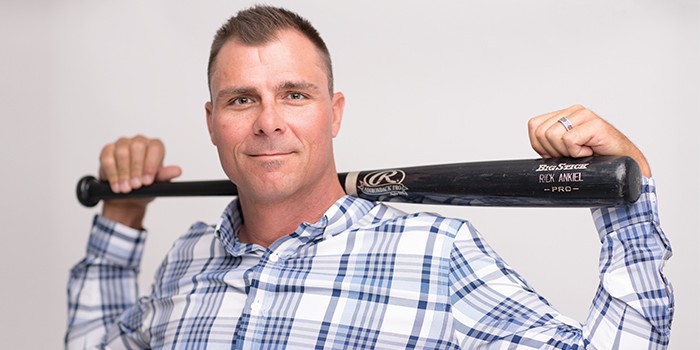

JUPITER, FL – June 28, 2017 – The date: October 3, 2000. The venue: Busch Memorial Stadium in St. Louis, Missouri. The event: Game One of the National League Division Series (NLDS) between the Atlanta Braves and the St. Louis Cardinals. 21-year-old Cardinals’ pitcher Rick Ankiel is on the mound and ready to go to work. There are nerves, adrenaline, and anticipation in the air. Up until this game, everything had gone right for young Ankiel. Lauded by his peers and the greatest minds and mouthpieces of the game as “the kid with the generational arm,” Ankiel was earmarked to be baseball’s next great pitcher. But something went wrong that day. Two innings in and gearing up for a stellar third, Ankiel all of a sudden threw a pitch that missed the catcher’s mitt by the proverbial mile. Then, he threw another wild pitch. And another. And another. Five wild pitches back to back in total; Ankiel had lost control and anxiety had set in via a condition known as “The Yips.” The control never returned after that. It was all but the beginning of the end; a cry in the dark for what could have been a fantastic pitching career. As Ankiel recalls, that was the moment that the uninvited, pesky “monster”—as he calls it—arrived: A moment that is well documented in Ankiel’s autobiography: “The Phenomenon: Pressure, the Yips, and the Pitch that Changed My Life,” which was released last April.
“I told everyone afterward that my delivery was out of whack and, this sort of thing would never happen again, and—ha-ha —at least I’d put my name in the record book, but the truth was it would happen forever now, and I hadn’t even gotten started on the record book, and my pitching career was officially and forever hopeless,” Ankiel recounts in his book. “That’s a lot to digest after fifteen minutes of clumsiness and emotional free fall.”
In the book, which he co-wrote with veteran sports journalist Tim Brown, Ankiel reveals the story of his career and life with the Phenomenon—the direct cause that brought Ankiel’s pitching career to early retirement before reaching his full potential. But his story as it pertains to “playing ball,” in actuality, was only beginning. Unwilling to surrender, Ankiel conquered the pressure in his mind derived from the demons comprising the Phenomenon, and returned to the major leagues as a hitter and star outfielder—joining the ranks of Babe Ruth and Mickey Mantle in the rare elite pantheon of ball players to have dual careers. Perseverance marks his story—and being able to reflect on that time, as well as other difficult moments throughout his life, and then pour his thoughts out on paper was therapeutic for Ankiel.
“As an athlete, you’re taught to show no emotion – to have a game face, despite what you might be going through internally.” Ankiel explains. “At the time it happened, I had no idea what was going on – I didn’t know what the word ‘anxiety’ exactly meant at that age. But later on in my life, when I had time to analyze it, I understood that it was a condition and I also understood that I wasn’t the only one that went through something like that, and it was then when I realized that it was the right time to write the book.”
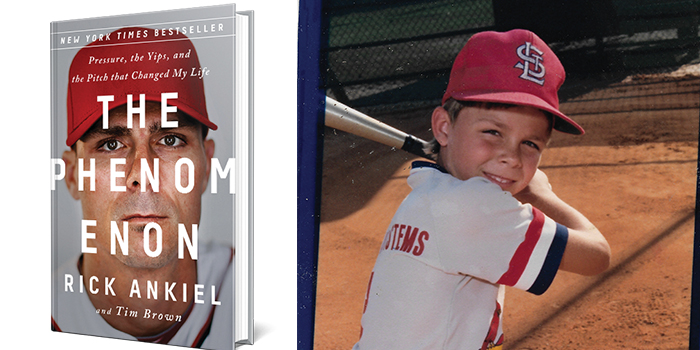
PRE-PHENOMENON
Ankiel is actually a Florida native. He was born in Fort Pierce; close to Jupiter, where he has now lived since 2000. Baseball got into his bloodstream at a young age, and his star started to shine while attending and pitching for the baseball team of Port St. Lucie High School. This is where he began turning heads by producing unbelievable stats. In 1997, during his senior season with the team, Ankiel went 11–1 with a 0.47 Earned Run Average (ERA) and struck out 162 batters in 74 innings. That same year, USA Today branded Ankiel by naming him High School Player of the Year. There is a plaque in the main office of the high school that honors Ankiel as 1997 Gatorade Player of the Year, and in one of the trophy cases of the school, a baseball jersey—No. 24, with a small inscription: “Richard Ankiel 1994-1997”—stands out from the rest of the silverware. This is where he blazed his trail—this is where he became a legend.
But while Ankiel excelled as a pitcher, there were other curve balls being thrown to him at home—and it seemed that the faster his fastball got and the more attention he drew, the faster his personal and family problems got magnified and became public. In retrospect of those years, Ankiel confirms that the hardships he endured didn’t come without scars, but combating those personal demons contributed to his growth as a player.
“I came from a dysfunctional home, but at the time, that didn’t stop me from pursuing my goals. It just made me want to work harder,” says Ankiel. “I can’t speak for what others do to master their skill level in baseball, but I don’t think anyone worked as hard as I did in high school.”
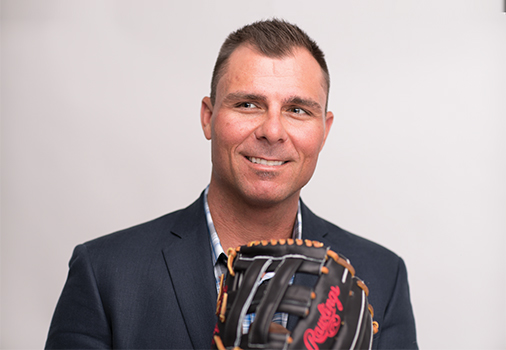
MINORS, MAJORS, AND THE MONSTER
On the same year he graduated high school, he was drafted as a second-round pick by the St. Louis Cardinals, receiving a $2.5 million signing bonus— the fifth-highest ever given to an amateur player. He began in the Minors in 1998, but was quick to make an impression by becoming the best pitching prospect in both the Midwest and Carolina Leagues; he was the All-Star starting pitcher of the latter. In this first year, he led all minor pitchers with a total of 222 strikeouts and was named the Cardinals’ Minor League Player of the Year. He repeated this feat the year after; he was an All-Star pitcher for several competitions; and he was also named Minor League Player of the Year by USA Today and Baseball America. He possessed a gun of a left arm that could produce a 93-mile-an-hour (mph) fastball and a tremendous potential that programmed him to be the next Sandy Koufax. Ankiel’s progression came organically; the future was wide open; and the Majors beckoned him.
“As a young kid, my goal was to be the best pitcher ever,” says Ankiel. “Everything that was happening one day to the next was leading on that path.”
At the turn of the century, Ankiel’s first season in the Majors was filled with enviable stats: He started in 30 games, posted an 11-7 record, 194 strikeouts, and a 3.50 ERA. He was 20-years-old—the second youngest player in the league—and he was throwing curve balls as his main strikeout pitch; he also threw intimidating sinkers; and his fastball now fluctuated between 94 to 97 mph. He led the Cardinals to win a National League Central Division championship, and became the first-choice starter for what came next: The NLDS. In Game One, even though the Cardinals won the game, Rick Ankiel, the pitcher who could have been the best, collapsed. Succumbed to the “yips.”
“It’s hard to remember how good I was [at pitching], before it happened,” admits Ankiel. “I was extremely good though, and all of a sudden, it was as if I couldn’t feel the ball in my hand. It felt like something was taking over me just before I released the ball. My body wasn’t doing what I was telling it to do.”
Ankiel further describes the condition as a negative force that starts off as purely mental and then transcends into mechanical function.
BEATING THE MONSTER
For the next four years, Ankiel still pitched, but it wasn’t the same. He was sent down to the Minors, then to the Rookie League, and then made a tenuous yet unfulfilling comeback to the Majors in 2004, at which point he decided it was time to put his pitching aspirations to bed. Nevertheless, Ankiel refused to give up on the game that he loved and announced that he was going to switch to the outfield. During this time, his biggest source of help to help conquer the Phenomenon actually came off the field, by way of the late sports psychologist Harvey Dorfman. Dorfman was a tremendous influence in Ankiel’s recovery, and he credits him as such to great length in his book. As for Ankiel’s intent to become an outfielder, there were few who believed this could be a smooth transition. However, in 2006, the Cardinals invited Ankiel to spring training, offering a slim chance to make the team as a reserve player. Against all odds, Ankiel’s performance as an outfielder was strong and he was able to work his way up from the Minors and gradually return to the Majors in 2007.
“It was a completely different dynamic but I wanted to give it a try,” says Ankiel. “It was thrilling to know that I could be in a position where I could hit the walk-off homerun instead of throwing the no-hitter. It was a pretty empowering thought.”
An empowering thought that became reality: On his return to the Majors, Ankiel hit a home run during his first game as an outfielder for the Cardinals. If Ankiel’s life was based on a script, then it couldn’t have been written any better. As he ran through the bases, Ankiel describes feeling numb; that he was floating from base to base and all the while he received a prolonged standing ovation from the St. Louis faithful; a surreal moment of blissful redemption. It was the first home run of 74 over seven seasons.
Aside from the Cardinals, Ankiel played for the Kansas City Royals, the Atlanta Braves, the Washington Nationals—where he hit 14 home runs in the 2011-12 season—the Houston Astros, and the New York Mets. But out of all the times that he hit the ball out of the park, there’s one that stands out more to Ankiel even than that first one. It was with the Braves during Game 2 of the NLDS game against the San Francisco Giants. He notes that this home run came at a special time because it was legendary coach Bobby Cox’s (a personal hero of Ankiel’s) last year with the team prior to his retirement, he notes.
“I grew up a Braves and Bobby Cox fan, so being able to play for him before he retired was a true honor,” says Ankiel. “It was a walk-off home run in the eleventh inning that won the game. It was my a-ha moment where I felt I was at the pinnacle of my career.”
Ankiel retired from Major League Baseball in 2014 and subsequently became a Life Skills Coordinator for the Washington Nationals, mentoring players in the Nationals’ farm system, as well as players in the Major League level. He eventually moved on from that and currently works for Fox Sports Midwest as a sports analyst. He mentions that, even though the studio is in St. Louis, where he maintains numerous friendships from his years as a Cardinal, the position allows him the flexibility to travel back and forth to Jupiter and spend some quality time with his wife Lory, and his two sons, Declan and Ryker.
|
| 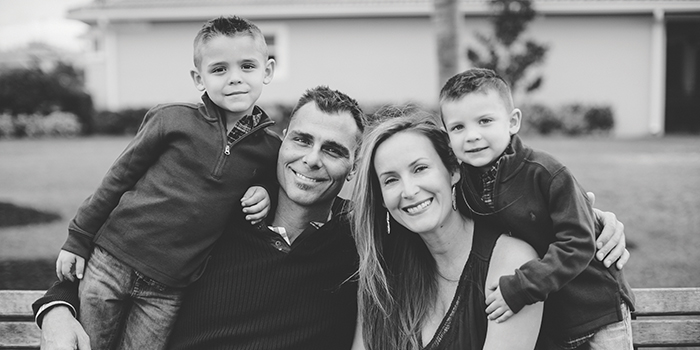 |
“For me, the Jupiter lifestyle is the best there is and it fits me like a glove,” says Ankiel. “I golf, I fish, the Bahamas are right there… everything I do revolves around here. This is home and I’ll never leave.”
To have conquered the yips, the monster, or the Phenomenon—whatever you want to call it—by having a dual baseball career is Ankiel’s greatest professional and personal accomplishment; an accomplishment that makes for an inspirational success story, which he has now shared with the world.
“Looking back on the whole thing, it feels not only that I’ve had two different careers, but two different lives,” says Ankiel. “While it was hard to relive some of the darker moments, writing them out and then reading them out loud gave me a sense of pride of where I am today because of them.”
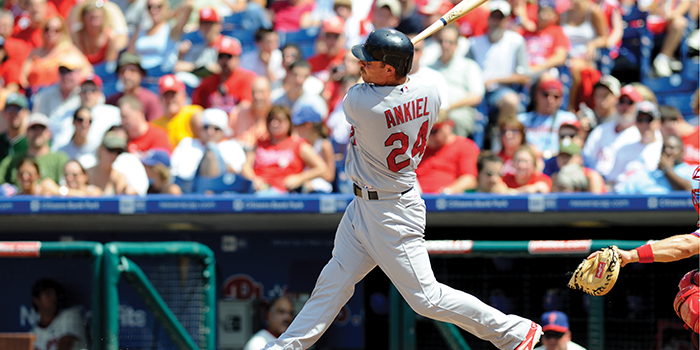
They’re not baseball stats—these are just a few of Rick Ankiel’s defining characteristics and local favorites
Life Motto: “Never give up.”